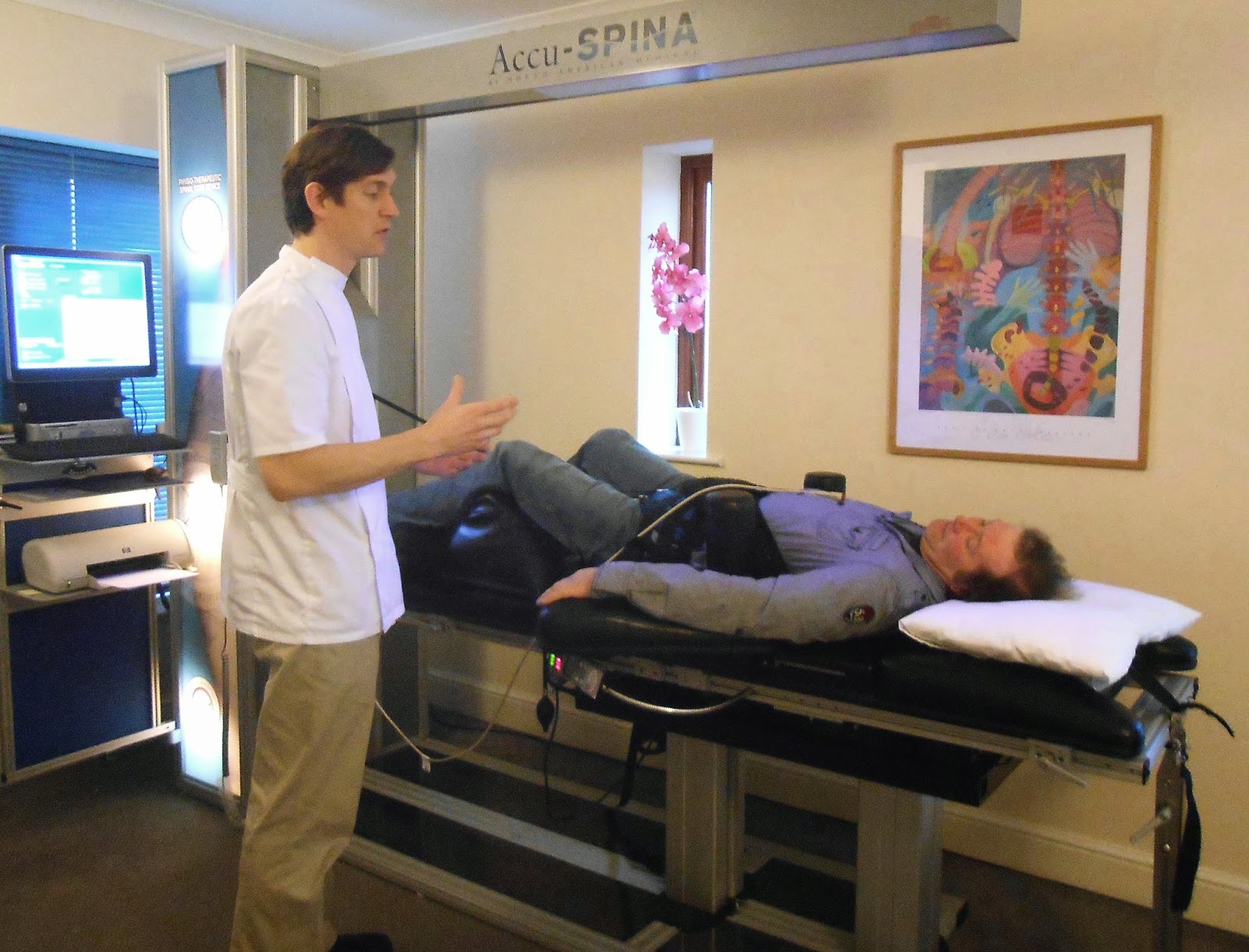Mark Roughley is the Clinical Director of Leominster Osteopaths in Herefordshire. Mark has been using IDD Therapy to treat his chronic disc patients for the past three years. Here Mark talks about herniated or ‘slipped’ discs and why IDD Therapy is a significant step forward in the way clinicians can treat them non-invasively.
The spine is made up of 24 individual bones (vertebrae). The discs are the padding or ‘shock absorbers’ in between the bones which protect us when we run or jump. A ‘slipped’ disc is a disc which has bulged outwards from its original or intended position; is also termed a prolapsed or herniated disc. It can happen for a number of reasons but generally it occurs due to excessive pressure being absorbed by the disc and the jelly substance being squashed outwards.
Unless due to trauma, the underlying cause is always the individual’s posture. Whether the spine is too stiff, too flat or too curvy, the disc always ruptures at the point of most pressure. In some cases it is only a minor bulge but in others it can be a serious herniation of internal disc fluid through a rupture in the disc wall and into the spinal space.
The degree to which a disc is slipped is not indicative of the level of pain a patient is in; however, the tissue which the bulge or prolapse comes into contact with is significant. Comparison MRI scans have revealed that some patients with only a slight disc bulge can be in the most debilitating pain whilst others showing severe degenerative changes and multiple disc prolapses have no symptoms at all.
If the slipped disc disturbs or irritates other tissues then this will setup an inflammatory response whereby you get swelling, redness, heat and pain. Muscles and other tissues respond and contract, causing stiffness and aching, and if a nerve root is involved then you can get pain referred down the leg, termed radicular pain or commonly sciatica. Leg pain can be referred from other tissues not only the nerves so just having leg pain does not automatically mean sciatica.
IDD Therapy is an invaluable tool for decompressing the slipped discs and thereby reducing the pressure on other structures. It passively stretches the muscles, reducing their level of heightened tension and ‘guarding’ and creates more space between the bones to permit the bulge to be drawn back in towards the centre of the disc.
It also improves the blood flow to the area and stimulates the healing process and stretches the deep postural ligaments which hold the spine together (simple physics: increased volume leads to reduced pressure). In an acute case, relief can happen at an early stage as the injury is fresh and not a lot of physiological changes have occurred in and around the slipped disc. However most cases treated with IDD Therapy are chronic ones.
By the time patients have exhausted the usual medical avenues (a period of months usually) their condition and local tissues will have undergone significant changes. Muscles will have either gone into a long-term contracted state and started to become more fibrous in nature or they will have switched off and weakened. Ligaments will have tightened in an attempt to give better stability and the patient will tend to weight-bear in a manner which avoids loading the damaged disc.
IDD Therapy gives the body a chance to rehabilitate under passive decompression and give relief to the troubled area. During a programme of IDD Therapy, exercises are given to the patients at the progressive stages of treatment to enhance the IDD Therapy and improve their flexibility and strength.
Osteopathy is used during the course of treatment to address the crux of the problem which is the posture. Addressing the posture is crucially important to the long term benefits of IDD Therapy – and for the general health and well being of the patient.
The three key components of the IDD TherapyProgramme: mechanical distraction and mobilisation, osteopathy and exercise can provide the complete rehabilitation a chronic disc patient requires to gain long-lasting pain relief and mobility.
For more information about IDD Therapy at Leominster Osteopaths, call the clinic on 01568 610610 or go to www.leominsterosteopaths.co.uk







